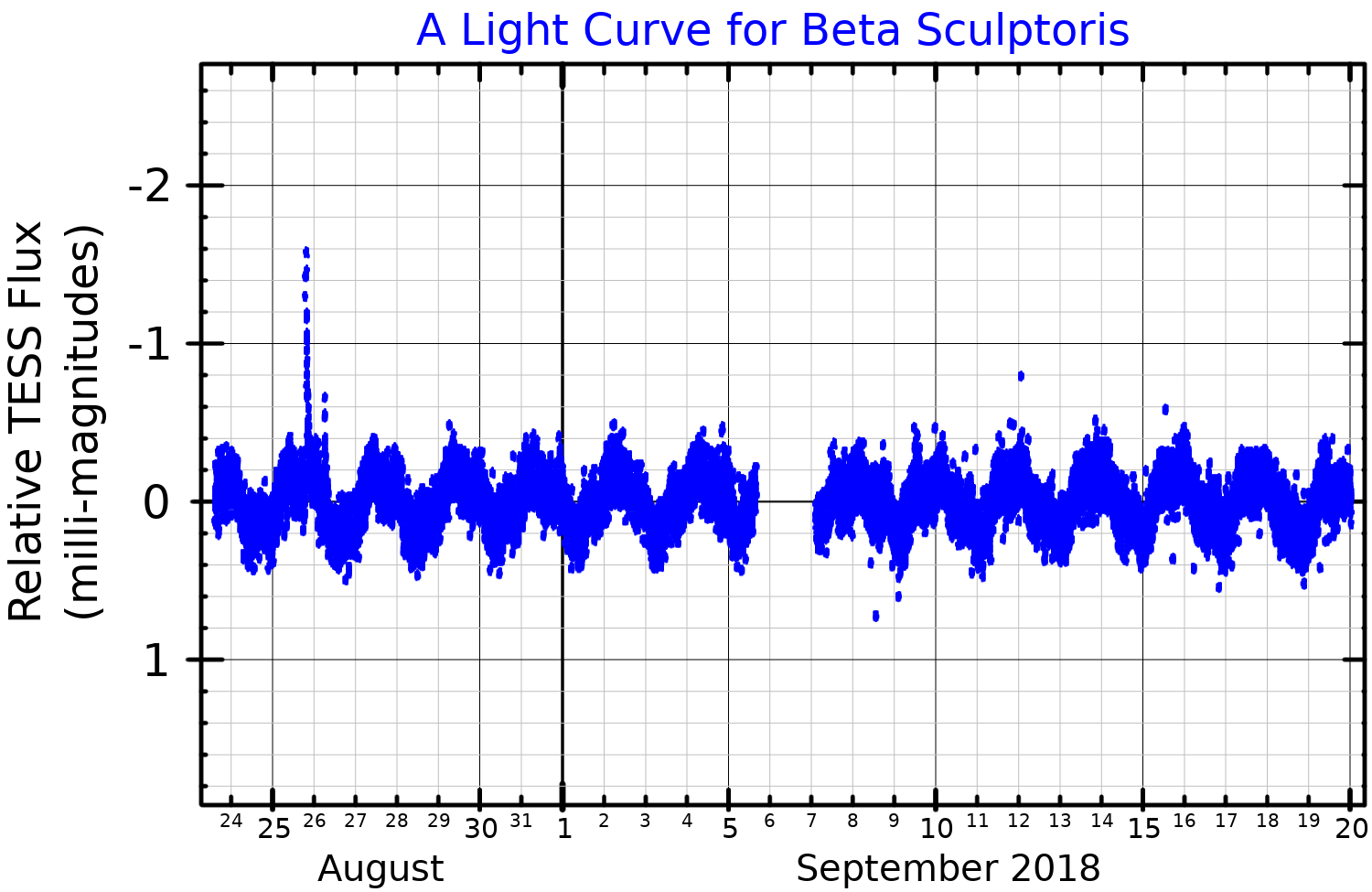Beta Sculptoris on:
[Wikipedia]
[Google]
[Amazon]
Beta Sculptoris, Latinized from β Sculptoris, is a single, blue-white hued  This is a
This is a
star
A star is a luminous spheroid of plasma (physics), plasma held together by Self-gravitation, self-gravity. The List of nearest stars and brown dwarfs, nearest star to Earth is the Sun. Many other stars are visible to the naked eye at night sk ...
in the southern constellation
A constellation is an area on the celestial sphere in which a group of visible stars forms Asterism (astronomy), a perceived pattern or outline, typically representing an animal, mythological subject, or inanimate object.
The first constellati ...
of Sculptor
Sculpture is the branch of the visual arts that operates in three dimensions. Sculpture is the three-dimensional art work which is physically presented in the dimensions of height, width and depth. It is one of the plastic arts. Durable sc ...
. It has an apparent visual magnitude
Apparent magnitude () is a measure of the brightness of a star, astronomical object or other celestial objects like artificial satellites. Its value depends on its intrinsic luminosity, its distance, and any extinction of the object's light ca ...
of 4.37, which is bright enough to be seen with the naked eye. Based upon an annual parallax shift of 18.74 mas as seen from Earth, it is located 174 light year
A light-year, alternatively spelled light year (ly or lyr), is a unit of length used to express astronomical distance, astronomical distances and is equal to exactly , which is approximately 9.46 trillion km or 5.88 trillion mi. As defined by t ...
s from the Sun
The Sun is the star at the centre of the Solar System. It is a massive, nearly perfect sphere of hot plasma, heated to incandescence by nuclear fusion reactions in its core, radiating the energy from its surface mainly as visible light a ...
.
 This is a
This is a B-type main-sequence star
A B-type main-sequence star (B V) is a main-sequence (hydrogen-burning) star of spectral type B and luminosity class V. These stars have from 2 to 16 times the mass of the Sun and surface temperatures between 10,000 and 30,000 K. B-type stars ...
, despite its stellar classification
In astronomy, stellar classification is the classification of stars based on their stellar spectrum, spectral characteristics. Electromagnetic radiation from the star is analyzed by splitting it with a Prism (optics), prism or diffraction gratin ...
of B9.5IIIp(HgMnSi) containing the luminosity class
In astronomy, stellar classification is the classification of stars based on their stellar spectrum, spectral characteristics. Electromagnetic radiation from the star is analyzed by splitting it with a Prism (optics), prism or diffraction gratin ...
of a giant
In folklore, giants (from Ancient Greek: ''wiktionary:gigas, gigas'', cognate wiktionary:giga-, giga-) are beings of humanoid appearance, but are at times prodigious in size and strength or bear an otherwise notable appearance. The word ''gia ...
. It belongs to the class of chemically peculiar star
In astrophysics, chemically peculiar stars (CP stars) are stars with distinctly unusual Metallicity, metal abundances, at least in their surface layers.
Classification
Chemically peculiar stars are common among hot main-sequence (hydrogen-burning) ...
s known as a Mercury-Manganese star
A mercury-manganese star (also HgMn star) is a type of chemically peculiar star with a prominent spectral line at 398.4 nm, due to absorption from ionized mercury. These stars are of spectral type B8, B9, or A0, corresponding to surface temper ...
, showing overabundances of mercury, manganese, and silicon in its spectrum
A spectrum (: spectra or spectrums) is a set of related ideas, objects, or properties whose features overlap such that they blend to form a continuum. The word ''spectrum'' was first used scientifically in optics to describe the rainbow of co ...
. It is a suspected α2 CVn variable with magnitude variation from 4.35 to 4.39. The star has nearly three times the mass of the Sun
The solar mass () is a frequently used unit of mass in astronomy, equal to approximately . It is approximately equal to the mass of the Sun. It is often used to indicate the masses of other stars, as well as stellar clusters, nebulae, galaxies a ...
and double the Sun's radius
Solar radius is a unit of distance used to express the size of objects in astronomy relative to the Sun. The solar radius is usually defined as the radius to the layer in the Sun's photosphere where the optical depth equals 2/3:
1\,R_ = 6.957\ti ...
. It is radiating 81 times the Sun's luminosity
The solar luminosity () is a unit of radiant flux ( power emitted in the form of photons) conventionally used by astronomers to measure the luminosity of stars, galaxies and other celestial objects in terms of the output of the Sun.
One nominal s ...
from its photosphere
The photosphere is a star's outer shell from which light is radiated. It extends into a star's surface until the plasma becomes opaque, equivalent to an optical depth of approximately , or equivalently, a depth from which 50% of light will esc ...
at an effective temperature
The effective temperature of a body such as a star or planet is the temperature of a black body that would emit the same total amount of electromagnetic radiation. Effective temperature is often used as an estimate of a body's surface temperature ...
of 12,110 K.
References
{{DEFAULTSORT:Beta Sculptoris B-type giants Alpha2 Canum Venaticorum variables Mercury-manganese stars Suspected variables Sculptor (constellation) Sculptoris, Beta CD-38 15527 221507 116231 8937